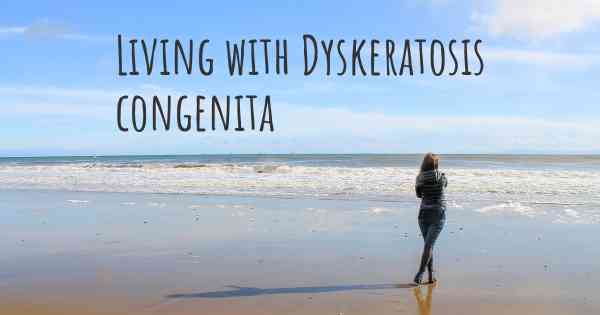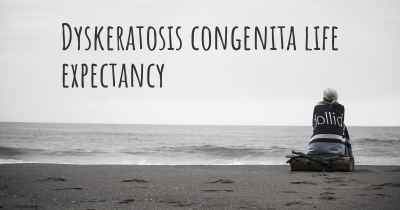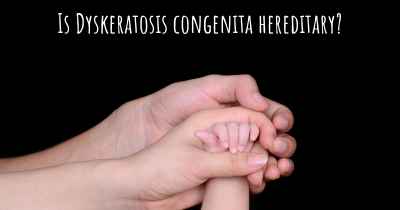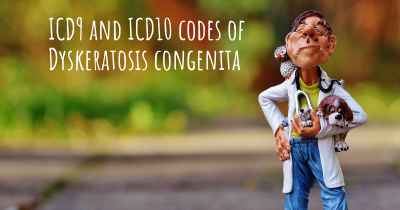Living with Dyskeratosis congenita. How to live with Dyskeratosis congenita?
Can you be happy living with Dyskeratosis congenita? What do you have to do to be happy with Dyskeratosis congenita? Living with Dyskeratosis congenita can be difficult, but you have to fight to try to be happy. Have a look at things that other people have done to be happy with Dyskeratosis congenita

Living with Dyskeratosis Congenita
Dyskeratosis congenita (DC) is a rare genetic disorder that affects multiple systems in the body. It is characterized by a triad of symptoms including abnormal skin pigmentation, nail dystrophy, and leukoplakia (white patches) in the mouth and throat. Additionally, DC can lead to various complications such as bone marrow failure, pulmonary fibrosis, and an increased risk of developing certain types of cancer.
Managing Symptoms
Living with Dyskeratosis congenita can be challenging, but with proper management and support, individuals with DC can lead fulfilling lives. Here are some strategies to help manage the symptoms:
Regular Medical Care
It is crucial for individuals with DC to receive regular medical care from a healthcare team experienced in managing this condition. This team may include hematologists, dermatologists, pulmonologists, and other specialists as needed. Regular check-ups and screenings can help monitor the progression of the disease and detect any potential complications early on.
Protecting the Skin
Abnormal skin pigmentation is a common symptom of DC. It is important to protect the skin from excessive sun exposure by using sunscreen, wearing protective clothing, and avoiding peak sun hours. Regular skin checks are also recommended to monitor for any changes or signs of skin cancer.
Nail Care
Nail dystrophy is another characteristic feature of DC. Proper nail care can help prevent infections and discomfort. Keeping nails trimmed, avoiding trauma to the nails, and using moisturizers can help maintain nail health.
Oral Hygiene
Leukoplakia in the mouth and throat can cause discomfort and increase the risk of infections. Maintaining good oral hygiene by brushing teeth regularly, using mouthwashes, and visiting a dentist for regular check-ups is essential. If necessary, a dentist may recommend treatments to manage leukoplakia.
Managing Complications
DC can lead to various complications that require specific management strategies:
Bone Marrow Failure
Bone marrow failure is a serious complication of DC that can result in low blood cell counts. Treatment options may include blood transfusions, medications to stimulate blood cell production, and bone marrow transplantation in severe cases. Regular blood tests and close monitoring are necessary to manage this complication effectively.
Pulmonary Fibrosis
Pulmonary fibrosis is a condition characterized by scarring of the lungs, which can cause breathing difficulties. Regular pulmonary function tests and imaging studies are important to monitor lung health. Treatment options may include medications to slow down the progression of fibrosis and oxygen therapy if necessary.
Cancer Screening
Individuals with DC have an increased risk of developing certain types of cancer, such as oral, gastrointestinal, and skin cancers. Regular cancer screenings, including skin examinations, endoscopies, and imaging studies, can help detect any abnormalities early on. It is important to discuss the appropriate screening schedule with a healthcare provider.
Emotional Support and Lifestyle Modifications
Living with a chronic condition like Dyskeratosis congenita can have a significant impact on mental and emotional well-being. It is important to seek emotional support from friends, family, or support groups who understand the challenges associated with DC. Counseling or therapy may also be beneficial in coping with the emotional aspects of living with a rare disease.
Additionally, certain lifestyle modifications can help improve overall well-being:
Healthy Lifestyle
Adopting a healthy lifestyle can contribute to better overall health. This includes eating a balanced diet, engaging in regular physical activity (as tolerated), getting enough sleep, and avoiding smoking or exposure to secondhand smoke.
Stress Management
Living with a chronic condition can be stressful. Finding healthy ways to manage stress, such as practicing relaxation techniques, engaging in hobbies, or seeking support from a therapist, can help improve quality of life.
Education and Advocacy
Staying informed about Dyskeratosis congenita and its management can empower individuals to actively participate in their own care. It is important to educate oneself about the condition, stay updated on the latest research, and advocate for appropriate medical care and support.
Conclusion
Living with Dyskeratosis congenita requires a multidisciplinary approach involving regular medical care, symptom management, and emotional support. By following proper management strategies, individuals with DC can lead fulfilling lives and effectively manage the challenges associated with this rare genetic disorder.








